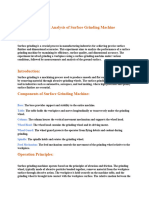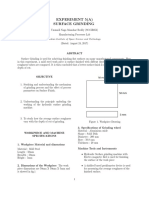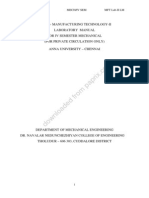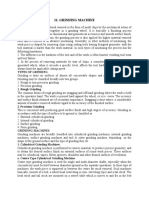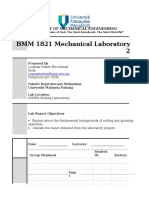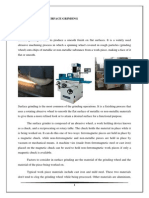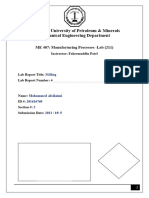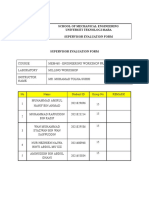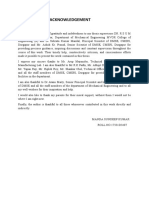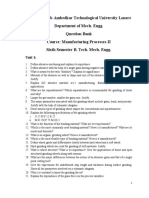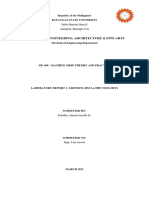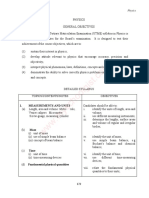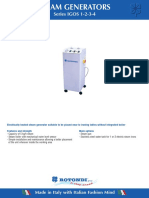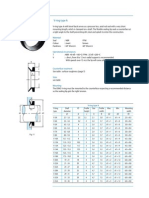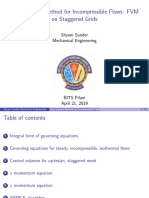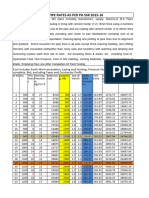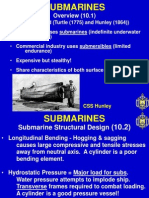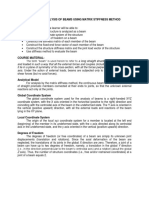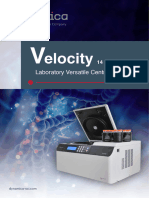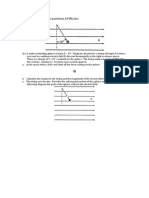0% found this document useful (0 votes)
30 views3 pagesLab Report
This lab report examines the constructional features and functions of different parts of a surface grinding machine, essential for precise machining operations. It outlines the types of surface grinding machines and details key components such as the base, table, and wheel head. The study emphasizes the importance of understanding these machines for achieving high accuracy and surface finishes in industrial applications.
Uploaded by
ahsansiam454Copyright
© © All Rights Reserved
We take content rights seriously. If you suspect this is your content, claim it here.
Available Formats
Download as DOCX, PDF, TXT or read online on Scribd
0% found this document useful (0 votes)
30 views3 pagesLab Report
This lab report examines the constructional features and functions of different parts of a surface grinding machine, essential for precise machining operations. It outlines the types of surface grinding machines and details key components such as the base, table, and wheel head. The study emphasizes the importance of understanding these machines for achieving high accuracy and surface finishes in industrial applications.
Uploaded by
ahsansiam454Copyright
© © All Rights Reserved
We take content rights seriously. If you suspect this is your content, claim it here.
Available Formats
Download as DOCX, PDF, TXT or read online on Scribd
/ 3

